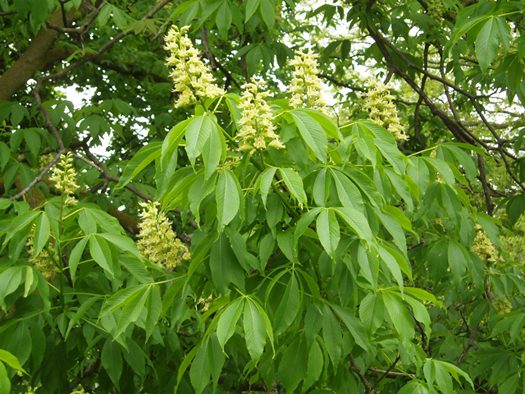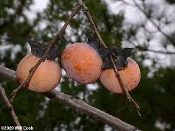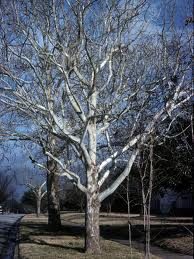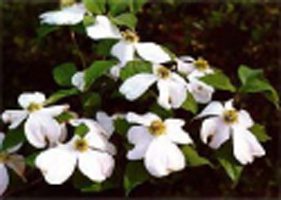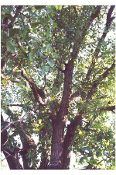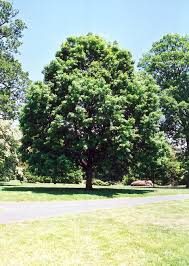Aesculus glabra, Ohio Buckeye, 12-18″ Native Bare Root Tree Spring Shipping Only !
$8.50
Out of stock
Spring Shipping Only !!
Aesculus glabra, Ohio Buckeye, 12-18″ Native Bare Root Tree
An order minimum of 5 of this size/species is required.
Native Ohio Buckeye trees for sale Wholesale Pricing is based on quantity.
5 or more $8.50 each
25 or more $5.50 each
For Shipping, Install and additional info please see “About Bare Root“.
Native bare Root Trees are cut and shipped while dormant, late November to early spring.
Order Minimum
There is a minimum order total of $150.00.
before tax (VA residents only) and shipping.
There are NO EXCEPTIONS.
Description
Aesculus glabra, Ohio Buckeye, 12-18″ Native Bare Root Tree
Can you eat buckeye nuts?
You can eat buckeye nuts but you have to remove the shells and roast them before eating. Raw buckeye nuts and their shells are pretty toxic. So, you can’t eat raw buckeye nuts. Moreover, the other parts of these plants are also poisonous. So, you can eat them after proper cooking.
Some wildlife species eat the seeds, but raw they are poisonous to humans and most domestic livestock. A variety of native bees visits the flowers, but the pollen and nectar are poisonous to honeybees. In some recent taxonomic treatments, the Hippocastenaceae is put into the family Sapindaceae. However, generally susceptible species are inherently aware and avoid this tree.
Common Name: Ohio buckeye
Type: Tree
Family: Sapindaceae
Native Range: Eastern United States and Canada
Zone: 3 to 7
Height: 20.00 to 40.00 feet
Spread: 20.00 to 40.00 feet
Bloom Time: April to May
Bloom Description: Greenish-yellow
Sun: Full sun to part shade
Water: Medium
Maintenance: Medium
Suggested Use: Rain Garden
Flower: Showy, Fragrant
Leaf: Fragrant, Good Fall
Attracts: Butterflies
Fruit: Showy
Tolerate: Rabbit, Black Walnut
Invasive: Where is this species invasive in the US?
Garden locations
Culture
Easily grown in average, medium, well-drained soils in full sun to part shade. Prefers moist, fertile soils. Foliage tends to scorch and generally depreciate in dry conditions. This is a taprooted tree that once established is very difficult to transplant.
Noteworthy Characteristics
Aesculus glabra, commonly called Ohio buckeye, is native from western Pennsylvania to Iowa south to Alabama and Arkansas. It is found throughout the State of Missouri where it typically occurs in rich or rocky wooded areas of valleys, ravines, bluff bases, slopes and thickets (Steyermark). This is a low-branched, small to medium sized deciduous tree that typically grows 20-40’ (less frequently to 75’) tall with a broad oval-rounded crown. Bright green palmate compound leaves emerge in spring, each with five spreading ovate-oblong leaflets to 3-6” long. Leaves mature to dark green in summer. Fall color is usually yellow, although foliage may develop interesting and attractive shades of orange and red in some years. Greenish-yellow flowers (to 1” long) appear in clusters in mid-spring (late April-May in St. Louis). Flowers are followed by the familiar fruit, which is a globular dehiscent capsule consisting of 1-2 buckeyes encased by a leathery light brown partitioned husk covered with warty spines. Fruit on the tree is interesting but not particularly ornamental. When ripe, each buckeye turns a handsome shiny dark mahogany brown with a light tan eye. Since colonial times, buckeyes have been carried by many school children and adults as good luck charms. Ohio is known as the Buckeye State and has adopted the buckeye as its State Tree. All parts of this tree, particularly the flowers, bark and twigs, emit an unpleasant odor when bruised, hence the sometimes common name of fetid buckeye.
Genus name is the Latin name for a kind of oak bearing edible acorns but applied by Linnaeus to this genus.
Specific epithet means smooth without hairs in probably reference to the smooth leaves.
Native Americans reportedly called the fruit of this tree “hetuck” meaning eye-of-the-buck in reference to the supposed resemblance of the shiny dark mahogany brown fruit to the eye of a buck deer. The common name of buckeye evolved therefrom.
The Ohio buckeye is a neatly rounded tree with low, sweeping branches and dense foliage that provides deep shade. It is one of the first trees to leaf out in the spring. Its name comes from the ‘buckeyes,’ a small, dark brown nut with a light patch resembling the eye of a deer, which grows inside a rounded prickly fruit capsule.
Ohio buckeye is a member of the Hippocastenaceae, the Horse Chestnut family. Species in this family range from medium shrubs to large trees. Well known species include various buckeyes and horse chestnut (A. hippocastanum), an ornamental widely planted in the northeast and northwest.
This tree reaches 21 meters (about 70 feet) tall, occasionally taller. The stem may reach 60 centimeters (2 feet) diameter. Leaves are opposite and palmately (arranged like fingers on a hand) compound with five (rarely 6 to 8) leaflets. Each leaflet is toothed and 7 to 15 centimeters (2.75 to 5.9 inches) long by 4 to 5 centimeters (1.6 to 2 inches) wide. The leaves are light to medium green above and light green below. Flowers are borne in terminal clusters (panicles) 10 to 15 centimeters long (3.9 to 5.9 inches), sometimes longer. The panicles are about two-thirds as wide as long. Flowers are greenish-yellow and about 2 to 3 centimeters (0.75 to 1.2 inches) long. Each flower has four pale yellow to greenish petals. The stamens stick out of the flower. Fruits are 3 to 5 centimeters (1.2 to 2 inches) diameter, bumpy capsules with soft (hard when young) spines. The capsules split open releasing 2 to 4 brown seeds, each with a lighter area.
Ohio buckeye is a bottomland species usually found on moist soils on floodplains. It also occurs on drier, more upland sites. It is occasionally found along roadsides and in fencerows. It is found from Minnesota, south to Iowa and Nebraska, and south to Texas, east to Georgia (but not Louisiana), north to Tennessee, Kentucky and West Virginia, then north to New York. It is also known in New Hampshire and Maine, Missouri and Illinois. It is also known from Ontario, Canada.
This species flowers in April to May depending on the part of the country in which it is found. The tree is sometimes planted as an ornamental. Some wildlife species eat the seeds, but raw they are poisonous to humans and most domestic livestock. A variety of native bees visits the flowers, but the pollen and nectar are poisonous to honeybees. In some recent taxonomic treatments, the Hippocastenaceae is put into the family Sapindaceae. However, generally susceptible species are inherently aware and avoid this species.
Uses
Not recommended as a street tree or for use near homes because of the litter produced (particularly twigs, fruit and falling leaves). A good selection for more remote areas of the landscape including native plant and woodland areas.
Aesculus glabra, Ohio Buckeye, 12-18″ Native Bare Root Tree
Related products
-

Platanus occidentalis, American Sycamore 18-24″ Wholesale Bare Root Native Trees
$8.00 Add to cart -

Cornus florida, Flowering White Dogwood 18-24″ Wholesale Native Bare Root Trees, Ships spring only!
$8.50 Add to cart -

Populus deltoides, Eastern Cottonwood 18-24″ Bare Root Native Trees, Cutting grown male non seeding. Also available as live stakes.
$3.00 Add to cart -

Quercus alba, White Oak 18-24″ Wholesale Native Oak Trees Bare Root
$8.50 Add to cart
